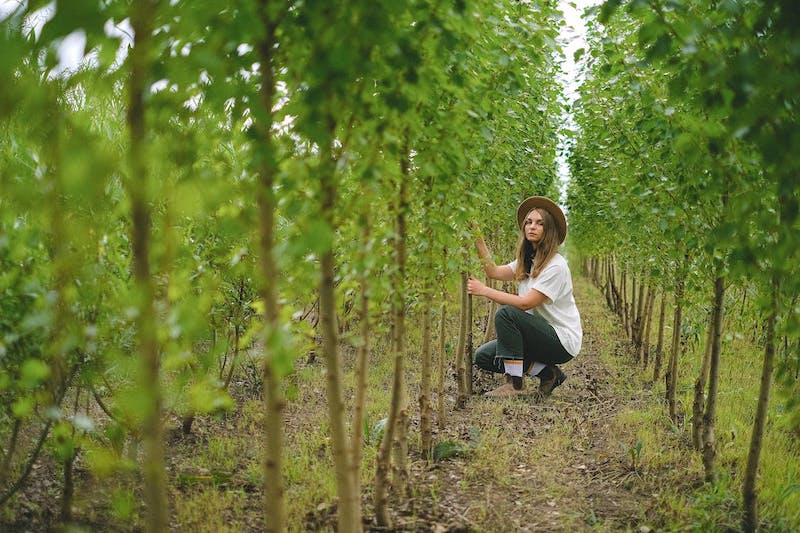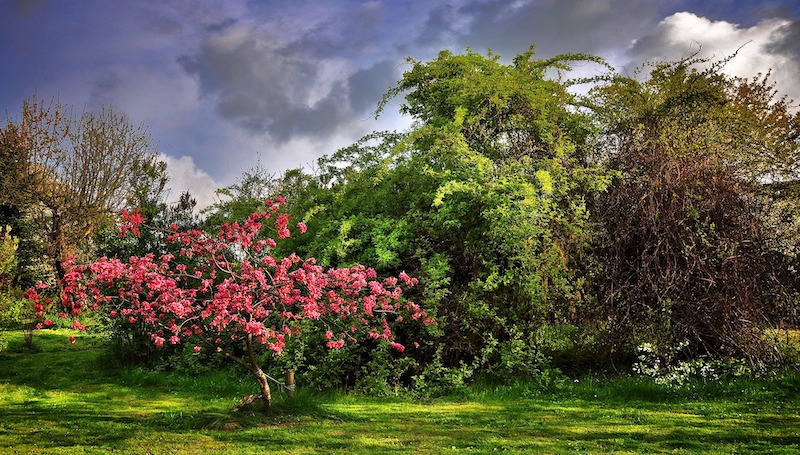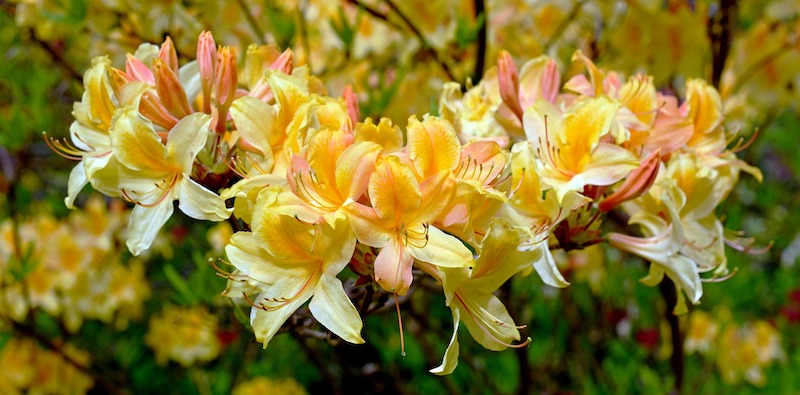There is one question to ask before applying fertilizer to the shrubs and trees in your garden: Is the shrub thriving and healthy, meaning it has no signs of yellowing leaves or reduced flowering/ fruiting? If the answer is ‘yes’, fertilizer may not be needed until the next growing season. Often yearly mulching with organic compost is enough to keep shrubs thriving. Heavy flowering or fruiting shrubs may require periodic fertilizing with a slow-release shrub food. Native plants growing in their preferred soil type and pH may never need supplemental feeding and may perform worse if overfed.

How to Fertilize Shrubs and Trees
Applying a top-dressing of granular fertilizer in the early spring is sufficient for most shrubs. Sprinkle the recommended amount on the soil around the root zone, which is usually 1 ½ times the tree or shrub's dripline diameter. Water the plants well. Every time the shrub or tree is watered, some fertilizer will soak into the soil, providing nutrients to the roots. If the soil is very compacted around an established shrub, use a garden fork to gently break up some of the compaction up to one foot from the base of the shrub before applying fertilizer.

Best Time To Fertilize Shrubs and Trees
Shrubs and trees respond to fertilizer best in the early spring, just as they come out of dormancy. As the soil begins to warm, the roots will be able to absorb the water in the soil and the nutrients dissolved in it. Beneficial bacterias and other microorganisms in the soil are not active in temperatures below 50 degrees F, so applying fertilizer while the ground is still cold or frozen does not result in efficient feeding of plants. Do not apply fertilizer late in the season or while planting in the fall. The late dose of fertilizer may result in a flush of foliage when the shrub or tree should be preparing for winter dormancy.

Best Fertilizer for Shrubs and Trees
Choosing a complete, slow-release fertilizer with an NPK ratio of 12-4-8 or 12-6-6 will support healthy growth in most shrubs. Espoma Plant-tone lasts up to 6 months and is safe for edible and ornamental plants. Heavy flowering shrubs such as roses or hydrangeas may need a formulation with a higher phosphorus content to support blooming. Fertilizers formulated for tomatoes and roses are beneficial for any heavy-blooming plants.
Shrub and Tree Fertilizing Tips
- Determine if the shrub requires supplemental feeding
- Apply granular fertilizer to the top layer of the soil
- Apply a slow-release formulation once early in the spring for light feeders
Warnings
-Always wear protective gloves and a face mask when handling chemical fertilizers.
-Closely follow all directions and storage guidelines that are on the fertilizer label.
 |
Author Robbin Small - Published 1-14-2023 |
